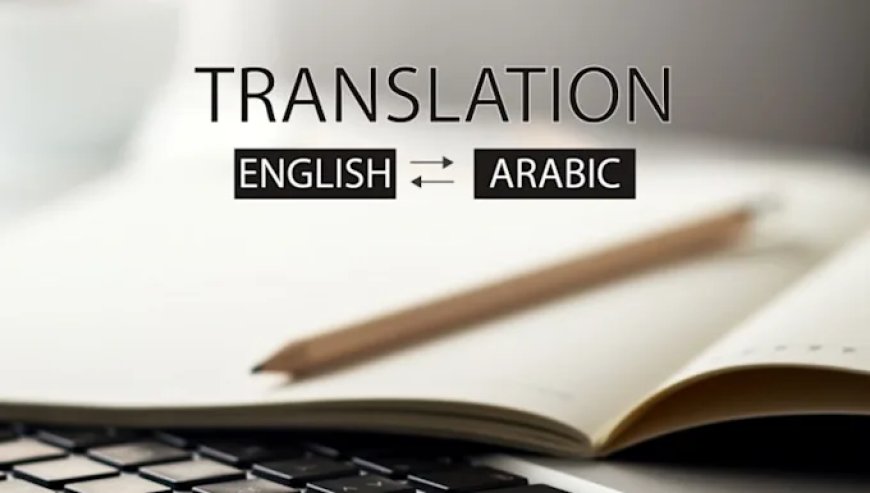Steps To Never Avoid When Doing Arabic to English Book Translation
Thinking of doing an Arabic to English book translation? Don’t wing it! Learn 10 fun, easy steps that make your translation pop, not flop.

So, got your hands on an Arabic book? Wah! But are you thinking, “I’m gonna translate this into English and make it shine!” Okay, great affirmations. However, hold on a second.
Arabic to English book translation isn’t just swapping words. You know? It’s a whole vibe. Like tricky phrases to cultural flips. You actually gotta keep it smooth and smart. And still true to the heart of the story.
But you're ready to find out how to do it. That's why you're here, right? So, let’s break it down in 10 simple steps:
1. Read the Book Like You Mean It
Firstly, you need to read the whole book religiously! Yup, the whole thing. Don't even think about translating without doing that. Why so? Because you need to
● feel the author’s voice
● understand the characters
● get the story’s mood
So, is it funny? Sad? Dramatic? You can’t translate what you don’t get. This helps you avoid messing up the tone. If you skip this, you might miss big meanings behind tiny words. So, grab snacks, get comfy, and dive in like you’re binge-watching your favorite show.
2. Know the Audience You’re Writing For
Translating a kids’ story? That's wayyy different from translating a political essay. So, ask yourself: Who’s going to read this in English? Are they
● teens
● students
● total book nerds
This matters a lot in Arabic to English book translation. The tone, words, and even the jokes need to match the reader’s vibe. But why? You don’t want a 12-year-old reading Shakespeare-level English, right? A
So, just adjust your words to match their brain level and energy. It’s like dressing for the party. You gotta know the dress code.
3. Keep the Cultural Vibes Alive
Arabic books are packed with like cultural
● sayings
● traditions
● food
● even the way people greet each other
Don’t just erase them. However, don’t confuse your reader either. So, you gotta find ways to explain or reword things. So, they still make sense in English, without killing the magic.
For instance, if a character says an Arabic proverb, you can either find a similar English one. Or just explain it quickly.
PRO TIP! Cultural context is a BIG deal in Arabic to English book translation. So, treat it with respect.
4. Watch Out for Idioms and Slang
Arabic has some wild expressions that just don’t hit the same level in English. For example
● “my liver” being a term of endearment
Um, excuse me? But if you translate that literally, it sounds creepy. So, here’s the deal. Find English phrases that match the meaning, not the words.
This is where your creative brain needs to show off. So, get to work! Arabic to English book translation is full of these moments. Hence, don’t be lazy. Either replace or explain. No one wants awkward robot-sounding dialogue.
5. Don’t Be a Word-for-Word Robot
If you think translation means replacing each word with its English twin, stop right there. That’s Google Translate energy, and we’re better than that. Arabic sentence structure is different. Some things come at the start in Arabic but move around in English. So, rewrite sentences so they actually sound like English. This is where human brains win. Your job in Arabic to English book translation is to make it feel natural, not like a puzzle that doesn’t fit together.
6. Double Check Names, Places, and Dates
Some names in Arabic might have English versions (like Youssef = Joseph). You’ve gotta decide—do you keep it as it is or switch it up? Same with place names. Make sure your choices are consistent throughout the book. Oh, and don’t mess up historical facts or date formats. Arabic dates can sometimes be Islamic (Hijri) instead of the usual calendar. Be sure you’re not accidentally moving the story to another planet. Small mistakes here can be a big “yikes.”
7. Get Help From Native Speakers
Are you fluent in Arabic and English? Impressive! BUT you can still mess things up. That’s normal. So, team up with someone who’s a native speaker. Especially if you’re unsure about
● weird phrases
● local jokes
● deep cultural stuff
It’s like having a buddy who stops you. Just before you walk out with toilet paper stuck to your shoe. LOL! In Arabic to English book translation, a second pair of eyes can catch the tiny things you miss. Plus, it’s more fun with friends!
8. Mind the Emotions
This is a biggie. Because you’re translating how it feels. So, what if a scene in Arabic makes you cry? Or laugh? Or scream? Then, the English one should do the same. It doesn’t? GO back and tweak it until it does. BUT WHY? Because emotions are the heartbeat of a book.
Don’t make them flat or boring. In Arabic to English book translation, your job is to pass on the feelings just as much as the facts. That’s the real art.
9. Edit Like a Savage (Then Edit Again)
Done with translating the whole thing? Don’t call it a day. Not yet! Editing is where the magic happens. Fix
● clunky lines
● check your grammar
● clean up typos
● make sure it flows like a river
Read it out loud, or even better, have someone else read it. And take feedback. Editing turns a messy draft into a book people want to read. This is the step that separates the good from the “meh.”
10. Stay True to the Author’s Voice
Finally, remember that it’s their book. Not yours. So, the writer had a vision. And your job is to honor it in a new language. Don’t
● change characters
● twist meanings
● cut corners
Sure, some things need adjusting. However, the soul of the story should still feel like the original. You’re a storyteller in two worlds. Be respectful, be careful, and bring their words to life.
Conclusion
Book translation isn’t just a skill. But more like a power! Because you get to bring incredible stories to a whole new audience. But do it right! You gotta be thoughtful and creative. Also, never run low on awareness.
So, is it about culture? Emotion? Or just the flow of the sentences? Each part matters. Just don’t rush it. Don’t fake it. And don’t treat it like a copy-paste job.








































